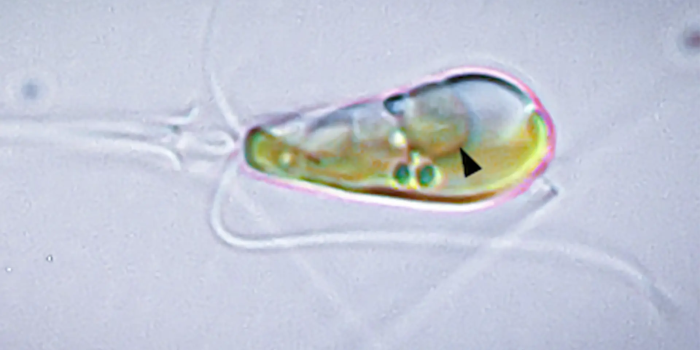Scientists have shown the birth of a new organism—fusing two lifeforms into one—in a unique evolutionary spectacle.
This fantastic process, called primary endosymbiosis, occurs when one microbial organism engulfs another, forming a symbiotic connection in which the swallowed microbe develops into a vital component of the host cell, much like an organ. This complex dance of symbiosis changes the host organism’s evolutionary course and gives it fresh capacities. Only twice in Earth’s history has primary endosymbiosis emerged; both times, it has signaled enormous strides forward in evolution.

The first major event happened around 2.2 billion years ago when a bacterium was consumed by an archaea. This resulted in the creation of mitochondria, the powerhouse of eukaryotic cells. Because mitochondria provided specialized energy production abilities, this crucial event aided in the creation of complex living forms. Similarly, cyanobacteria were absorbed by advanced cells some 1.6 billion years ago, leading to the development of chloroplasts, which allowed a wide variety of species, including plants, to engage in photosynthetic processes.
Scientists have recently discovered a fantastic rebirth of primary endosymbiosis. The algae species Braarudosphaera Bigelow has integrated a cyanobacterium, allowing it to fix nitrogen, which was previously impossible for plants and algae to achieve. First, it was believed to entail a symbiotic connection similar to other cases, but further examination showed a deep closeness between B. Bigelow and UCYN-A, the cyanobacterium.
After careful investigations, researchers found remarkable similarities between this symbiotic relationship and well-known organelles like mitochondria and chloroplasts. Primary endosymbiosis was clearly evident when cellular growth patterns and coordinated replication were analyzed. Further studies showed that UCYN-A depends on B. Bigelow for critical proteins, which is characteristic of organelle development.

Known as nitroplasts, this symbiotic integration is an incredible evolutionary milestone that started around 100 million years ago—a drop in the ocean compared to the ancient beginnings of mitochondria and chloroplasts.
Nitroplasts have consequences that go beyond evolutionary biology; they may improve crop development by fixing nitrogen.


